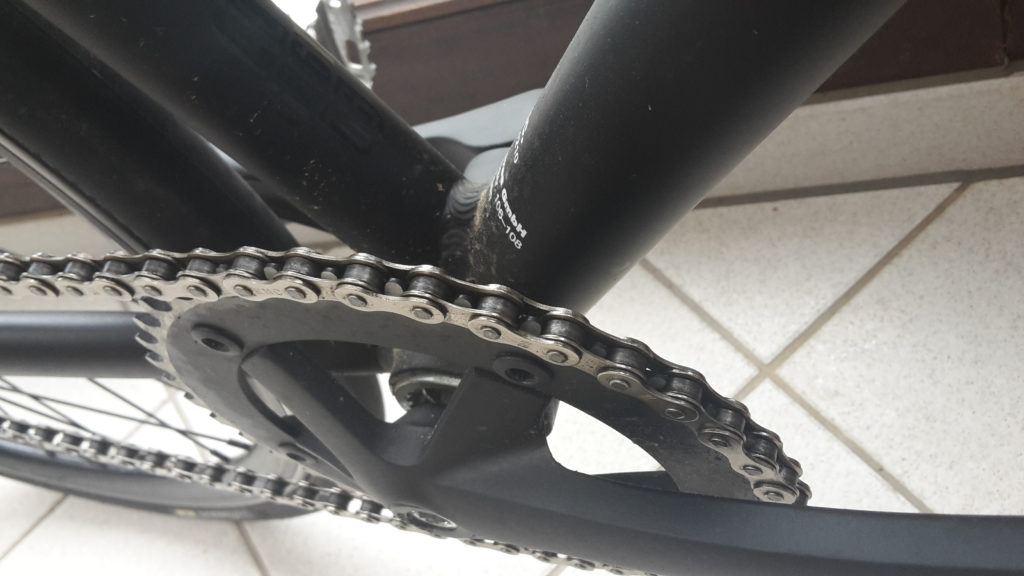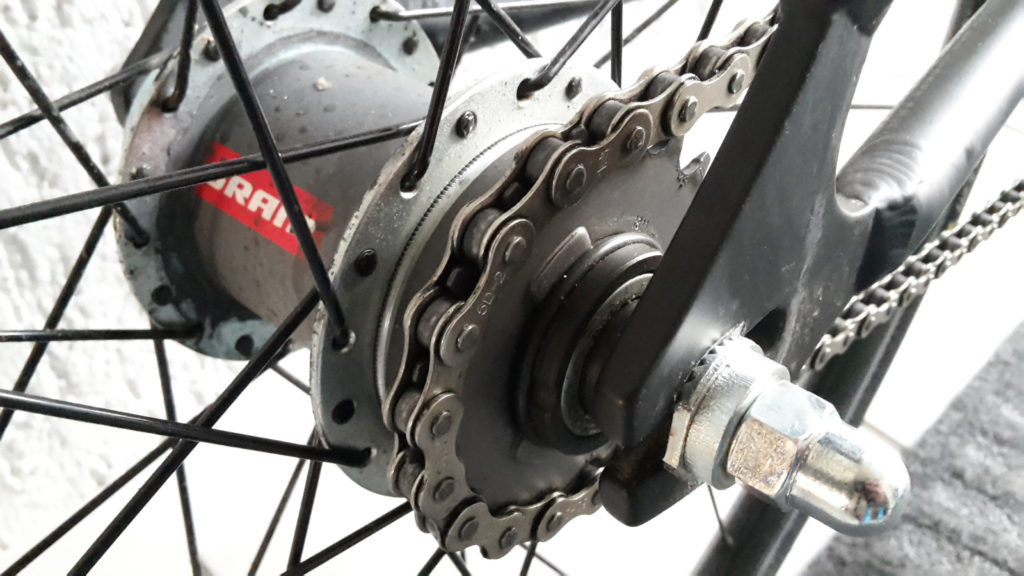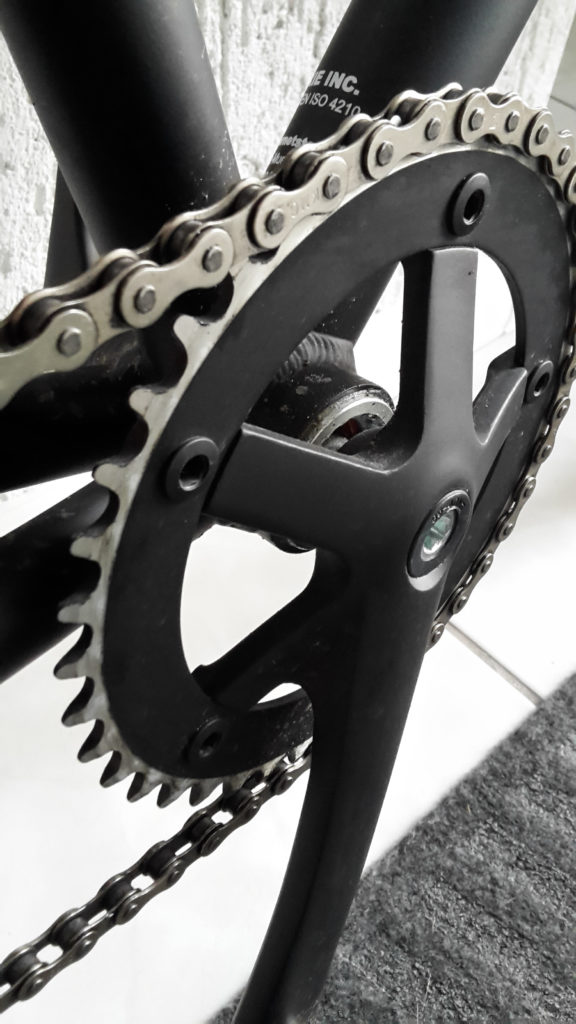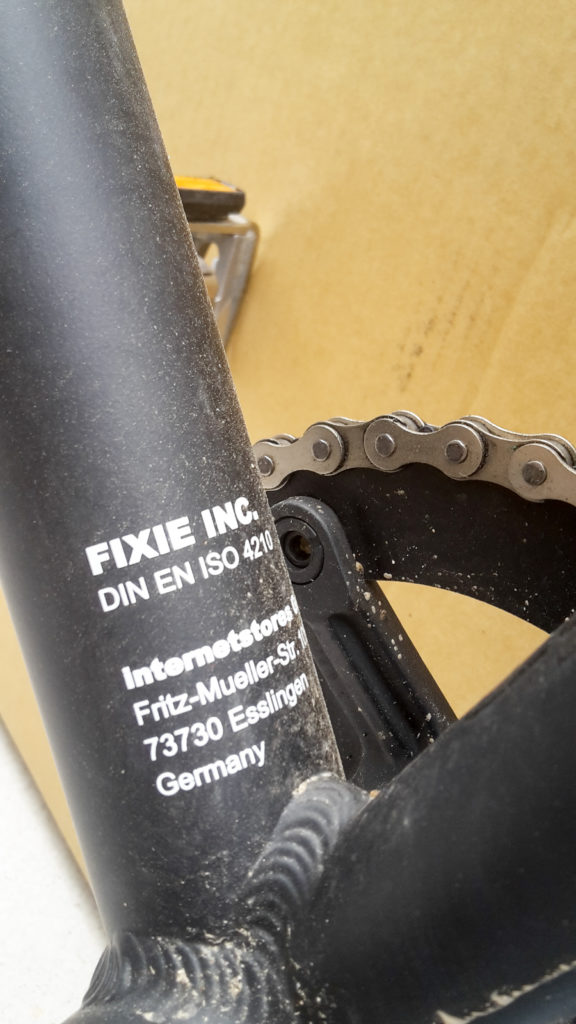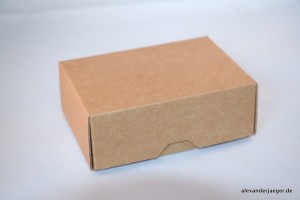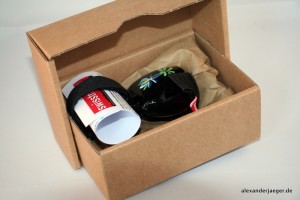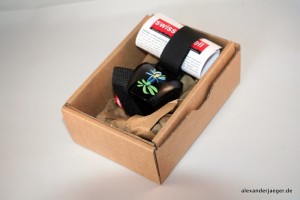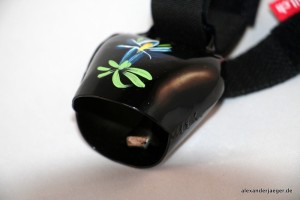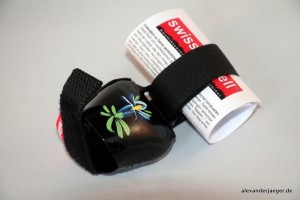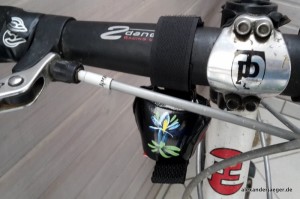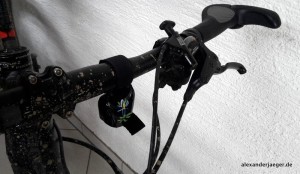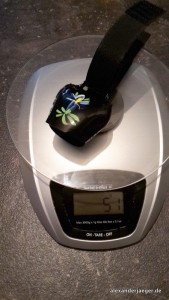Start
Als Fahrrad-Pendler hat man besondere Anforderungen an sein Gefährt. Beständigkeit, Geschwindigkeit, Alltagstauglichkeit, Sicherheit und Kosteneffiziens stehen im Vordergrund.
Die meisten Fahrräder erfüllen eines oder mehrere dieser Kriterien nicht oder nicht ausreichend. Durch Zufallen bin ich auf das FIXIE Inc. Floater twospeed RACE gestoßen. Fixie Inc. als Marke entstand laut deren Webseite im Jahr 2003 in Karlsruhe um 2012 an „internetstores“ verkauft zu werden um die Zielgruppe etwas anzupassen. Die Fahrräder sollen hauptsächlich für den Stadtgebrauch gemacht werden und einen gewissen LifeStyle vermitteln.
Optisch bauen die meisten Räder im Stile von fixed Gear bzw. Single-Speed Rädern. Auf die Vor- bzw. Nachteile von dieser Fahrradgattung soll hier nicht näher eingegangen werden.
Eine kleine Ausnahme bietet das Fixie Inc. Floater twospeed, welches, wie der Name vermuten lässt, zwei Gänge bietet und damit ein deutlich anderes Fahrgefühl erzeugt.
Unboxing & Aufbau
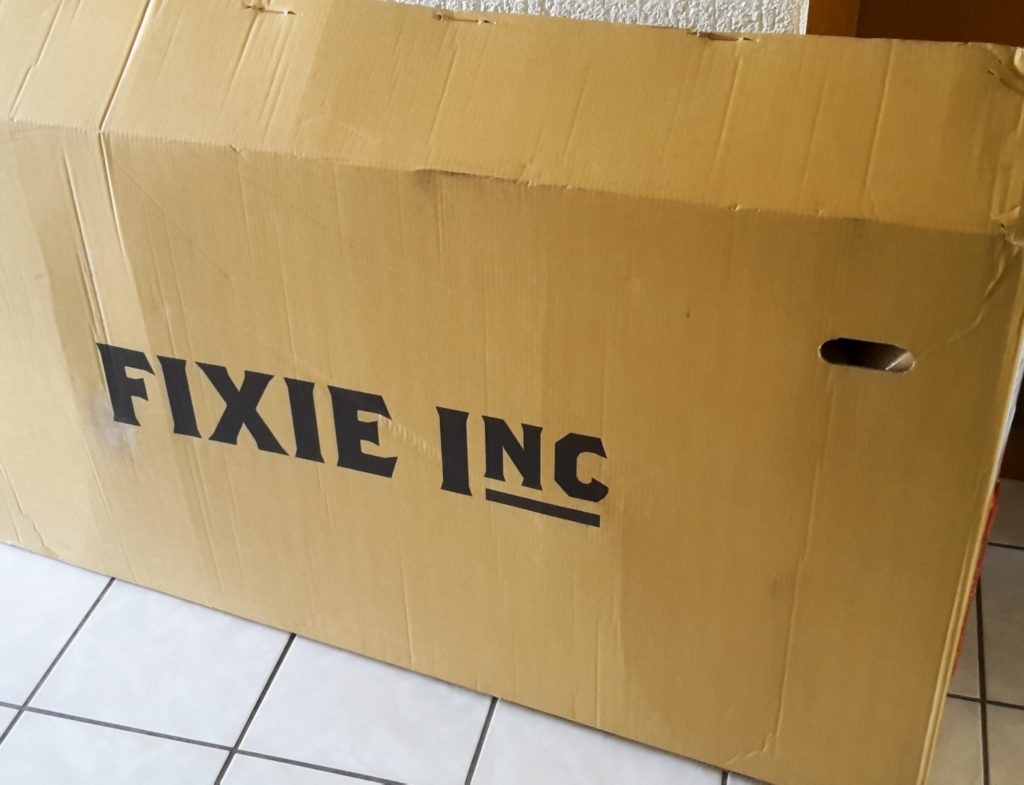
Das Fahrrad kommt in einem typischen Fahrrad Transport Karton, welcher ausreichend stabil ist und mit einem fetten Aufdruck „FIXIE Inc.“ direkt den Inhalt verrät.
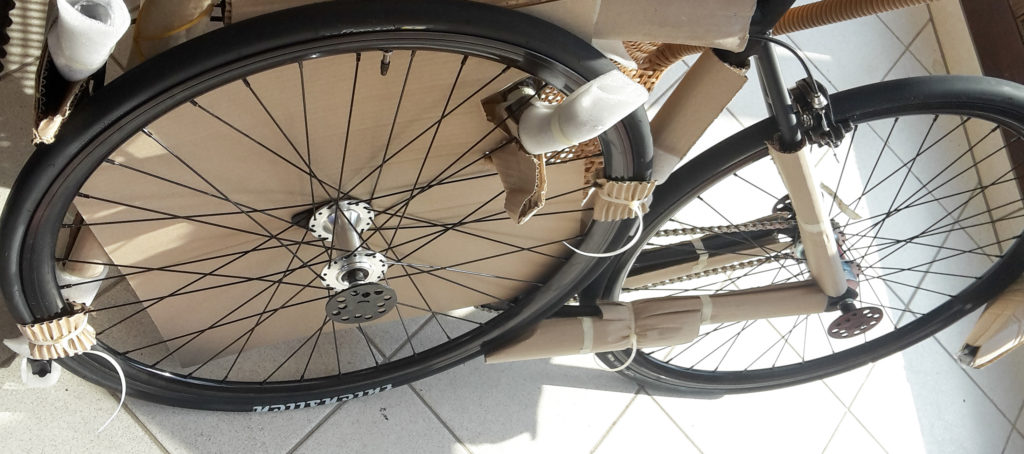
Im Inneren befindet sich das vormontierte Gerät mit allen benötigten Werkzeugen, Pedalen, Schrauben und einer Anleitung. Nachdem die Kartonagen, die zur Transportsicherung ausreichend am Fahrrad angebracht sind entfernt sind, kann man den Aufbbau in ca. einer halben Stunde bequem durchführen. Alle Schritte sind ausreichend in der Anleitung beschrieben und selbst für Anfänger kein Problem. Empfehlenswert ist die Verwendung eines Drehmoment-Schlüssels (nicht im lieferumfang) um die Klemmungen etc. korrekt anziehen zu können.
The basics
Geschlecht Unisex Rahmen Bauart: Race | Materialtyp: Aluminium |Material: 6061 Aluminium Gabel Bauart: Starrgabel |Typ: HLW-HFR007-1 / Aluminium; Cr-Mo Schaft / 1 1.8″ A-Head Schaltung Schaltungstyp: Nabenschaltung | Anzahl Gänge: 2 | Marke: Sram |Typ: Automatix Kettenradgarnitur Marke: Dashun | Typ: SS-8106 / S+M: 165 mm, L+XL: 170 mm |Übersetzung Blatt 1: 40 Zähne Innenlager Marke: TH |Typ: BB-7420ST Kette Marke: KMC |Typ: Z-510 Zahnkranz Übersetzung: 17 Zähne Bremsen vorne Marke: Tektro | Typ: R-315 |Bauart: Felgenbremse Bremsen hinten Marke: Tektro | Typ: R-315 |Bauart: Felgenbremse Bremshebel Marke: Tektro |Typ: RL-340 Lenker Marke: HL | Typ: DR-AL-48B / 420 mm | Bauart: Rennlenker |Material: Alu Vorbau Marke: HL | Typ: TDS-RD403G / S: 80 mm, M: 90 mm, L: 100 mm, XL: 110 mm | Bauart: A-Head |Material: Alu Steuersatz VP-A71+MD-1D Sattel Active DDK-5217ASP Sattelstütze Bauart: Patentstütze | Durchmesser: 27.2 mm | Typ: Kalloy SP-342 / 350 mm |Material: Alu Nabe vorne Typ: KT-D66F Nabe hinten Marke: Sram |Typ: Automatix 2-Gang Felgen Marke: Shining | Typ: A-320 | Material: Aluminium | Bauart: Hohlkammer |Größe: 28 Zoll Speichen HTi 14G Reifen vorne Marke: WTB | Typ: Freedom Thick Slick Sport | Größe: 28 Zoll |Reifenbreite: 28 mm Reifen hinten Marke: WTB | Typ: Freedom Thick Slick Sport | Größe: 28 Zoll |Reifenbreite: 28 mm Gewicht 10.2 kg (ca.) Einsatzzweck Sport Modelljahr 2016
Quelle: http://www.fahrrad.de/fixie-inc-floater-twospeed-race-black-379519.html
Sicherheit
Um sicher im Straßenverkehr zu bestehen, habe ich mir das Fahrrad mit diversen Dingen nachgerüstet.
Klingel
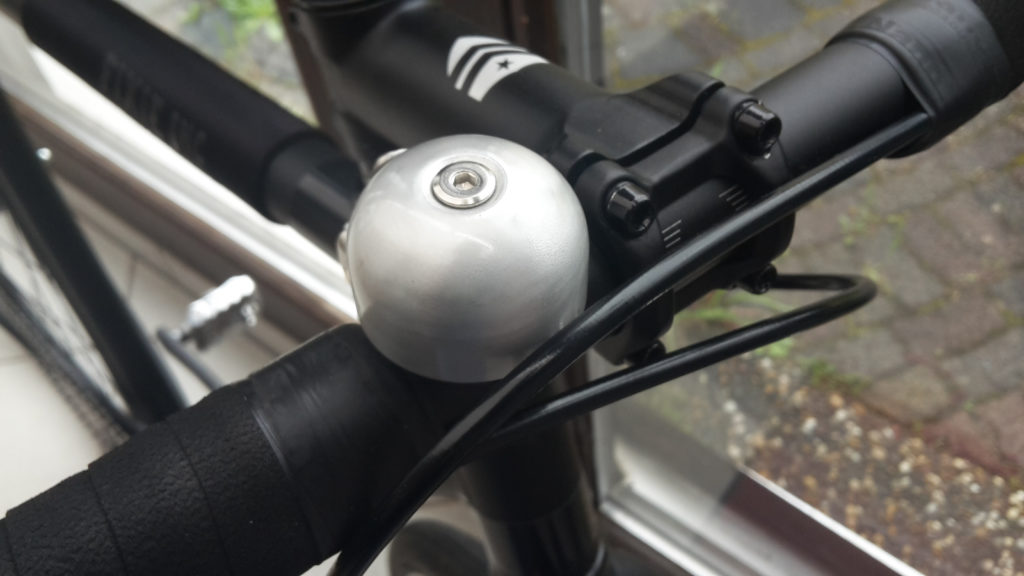
Aufmerksamkeit, als Radler möchte man für Aufmerksamkeit sorgen, sei es beim Überholvorgang oder in risikoreichen Situationen, eine der wichtigsten Gegenstände ist dabei die Klingel. Ich habe mich für eine schlichte aber sehr laute XXX entschieden. Optisch vergleichbar mit der YYY, aber nicht ganz so teuer.
Lichtanlage
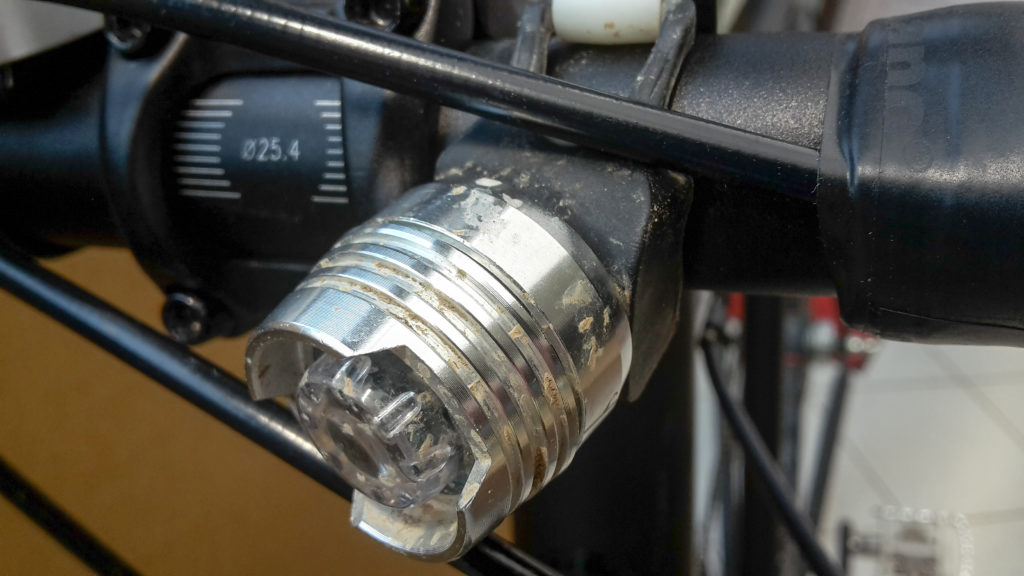
Licht ist nicht nur im Winter empfehlenswert, auch im Sommer kann man durch moderne LED Leuchtmittel gut auf sich aufmerksam machenund verhindert im Straßenverkehr übersehen zu werden. Aus meinem Fundus habe ich am Rad YYY verbaut, was mir in den Sommermonaten als ausreichend erscheint. Wer plant auch nach Sonnenuntergang unterwegs zu sein, sollte entsprechend mehr am Fahrrad verbauen.
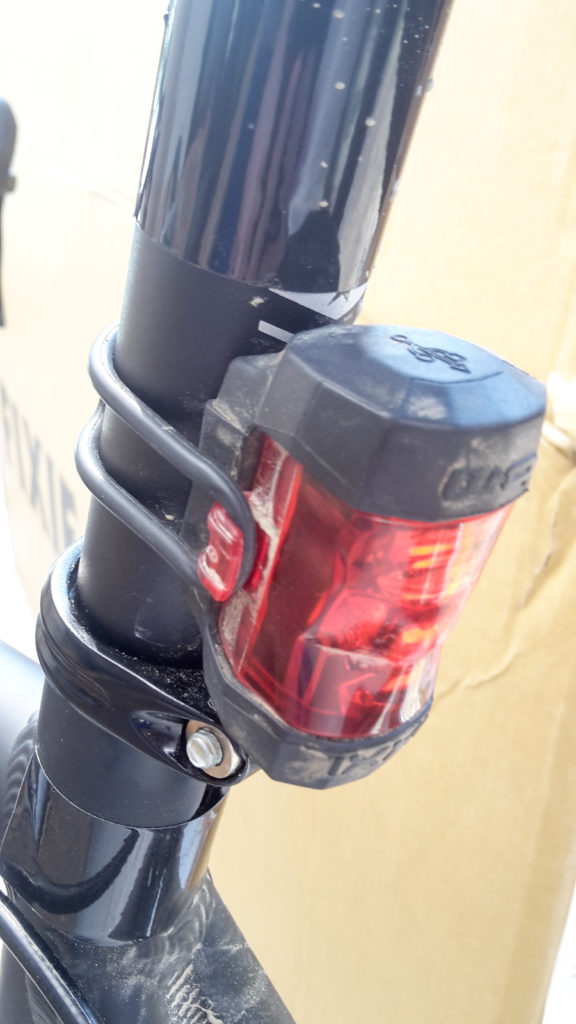 Reflektoren
Reflektoren
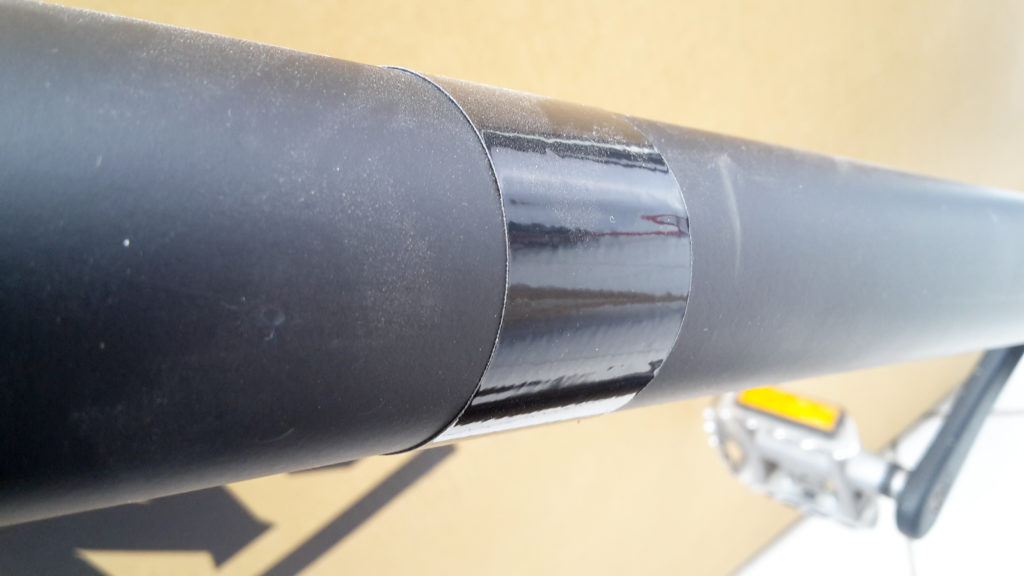
Neben aktiven Licht-Komponenten habe ich das Rad mit sehr vielen selbstklebenden und reflektierenden Folien beklebt. Das hat den Vorteil, dass tagsüber die schlichte Optik des Fahrrads nicht gestört wird. Bei Dämmerung oder in Dunkelheit können Autos und andere Teilnehmer im Straßenverkehr das Fahrrad aber deutlich besser sehen, da die Folien wirklich guten Dienst leisten.
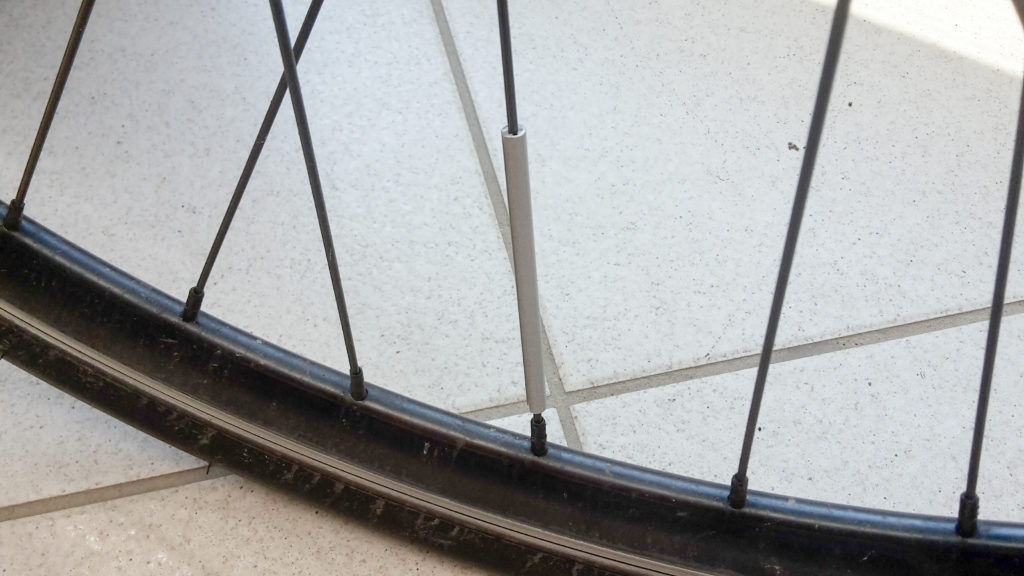
Obendrein sind in den Speichen noch Speichen-Reflektoren angebracht, selber Grund wie im vorigen Absatz beschrieben.
Verschleißteile
Narbe
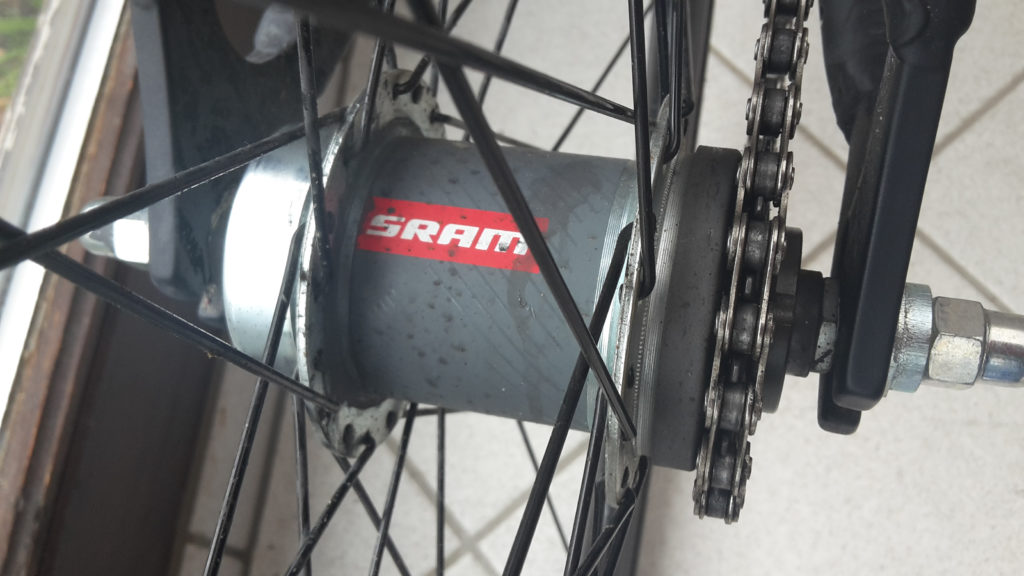
Herzstück des Rades und Grund der Nabensgebung ist die SRAM Automatix. Eine Zweigang Automatik Nabe. Sie bassiert auf mechanischer Fliehkraftkupplung und kann automatisch den Gang wechseln. Dies passiert abhängig von der Geschwindigkeit. Man startet im ersten Gang bis zu einer Geschwindigkeit von ca. 14-16 km/h und dann erfolg automatisch der Gangwechsel. Der zweite Gang liefert dann im Flachen ausreichend Entfaltung bis 35 und mehr km/h bei flachen Terrain.
Fahrgefühl
Am Anfang ist das automatische Schalten noch ungewohnt, nach kurzer Zeit gewöhnt man sich jedoch an den Luxus, nicht mehr über Gangwechsel nachdenken zu müssen und auch der Schaltzeitpunkt geht recht Schnell in Gewohnheit über.
Bei leichten Steigungen muss man mit dem dickeren Gang etwas drücken, was aber für die Form sicher nicht schlecht ist.
Probleme
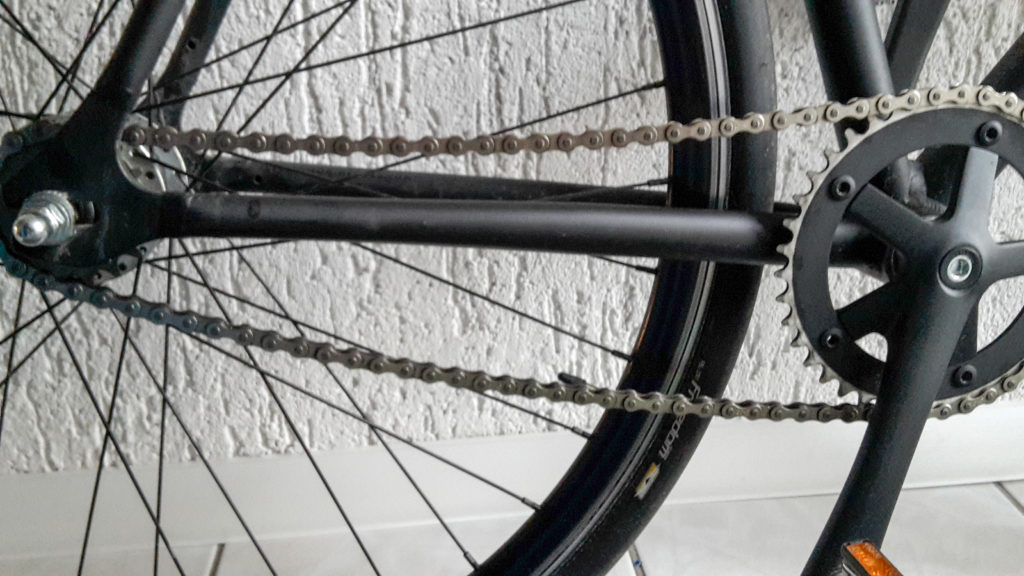
Ich hatte Probleme mit der Kettenspannung, wenn man das Hinterrad nicht mit entsprechender Spannung einbaut, hängt diese zum einen durch, die zu niedrige Kettenspannung ist somit optisch erkennbar, zum anderen kann es zum Herunterfallen der Kette in der Fahrt kommen, was dann recht unangenehm ist.
(Tipp: mit der Hand Zwischen Reifen und Rahmen paralell zur Kettenstrebe drücken, dann geht das Hinterrad automatisch nach hinten)
Hier ein Video für die richtige Kettenspannung:
Mein Rat
Anpassungen
Pedale
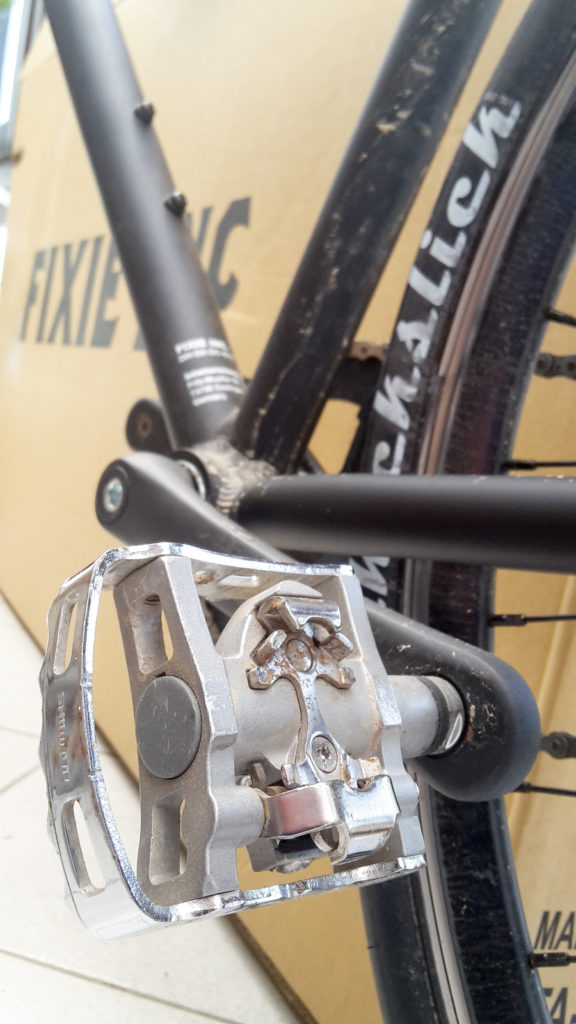
Die mitgelieferten Pedale machen auf mich nicht den stabilsten Eindruck und da ich sowieso für den täglichen Arbeitsweg Schuhe mit SPD Adapter nutze, habe ich Kombi-Pedale ZZZ verbaut, diese sind mit normalen Straßenschuhen und SPD Schuhen nutzbar.
Schutzblech
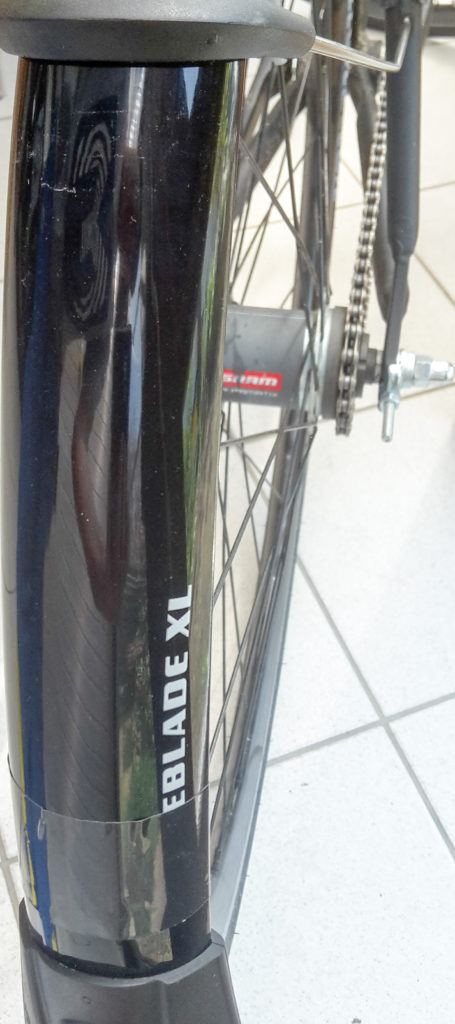
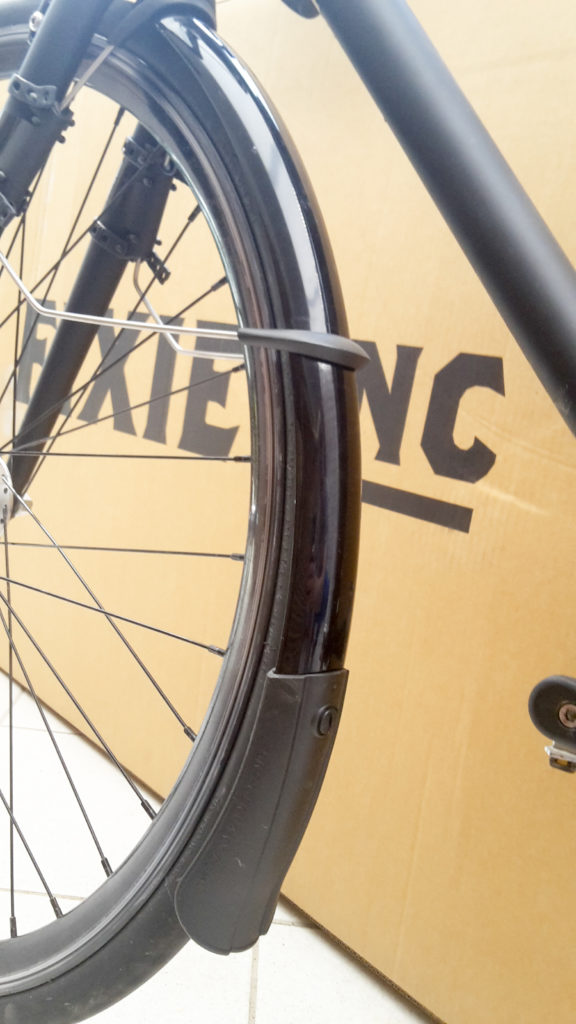
Bei der Pendelei lässt sich auch schlechtes Wetter nicht vermeiden. Regen ist dabei zum einen unangenehm, zum anderen verschmutzt das Rad auch deutlich schneller. Daher habe ich am Floater Schutzbleche der Firma ZZZ angebracht. Zu beachten ist hierbei, dass die normalen Race nicht passen, da diese zu eng bauen. Man benötigt vielmehr Race XXL. Am Vorderrad muss man etwas tricksen um das Schutzblech fest zu montieren, mit einem Stück der Gummihalterung unter der Halterung aber kein Problem.
Die Schutzbläche können auch noch mit Folie beklebt werden.
Langzeittauglichkeit
Bisher habe ich mit dem Fixie Inc Floater ca. 500 km gefahren, mir sind dabei noch keine größeren Mängel aufgefallen, geplant sind dieses Jahr noch mehrere Tausend Kilometer, ich denke in einem halben Jahr sollten mehr Erfahrungswerte vorliegen.
Preis
Im bisherigen wurde noch nicht über den Preis des Rades gesprochen, zum Zeitpunkt des Artikels ist das Rad für 369 Euro erhältlich.
Werkzeug
Ich empfehle den guten alten Knochen in das Werkzeugsortiment, welches beim radeln mitgeführt wird, aufzunehmen. Sollte mal ein Reifen platt sein oder die Kettenspannung nicht stimmen, kann man damit die nötigen Schrauben lösen.
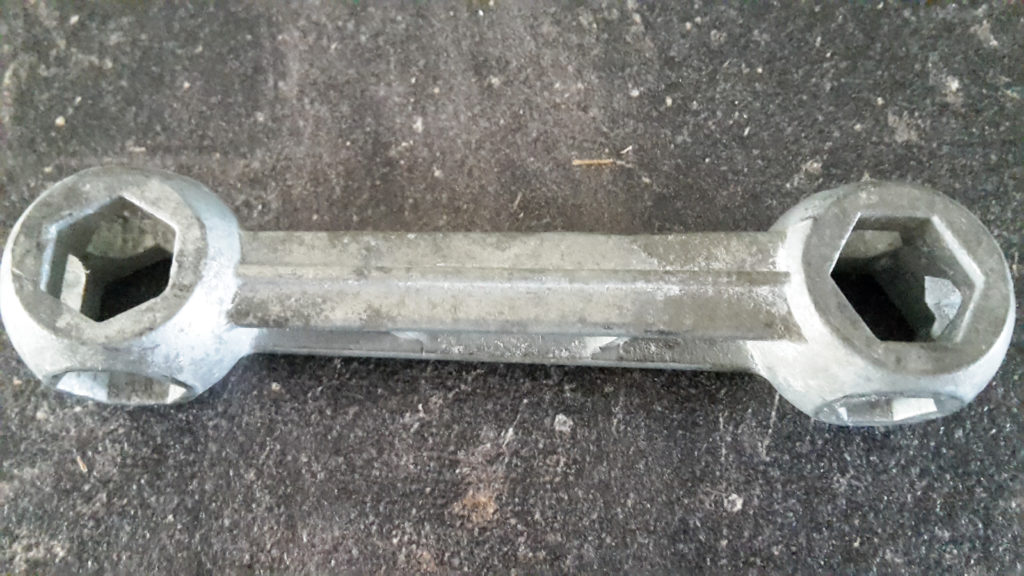
Weitere Bilder
